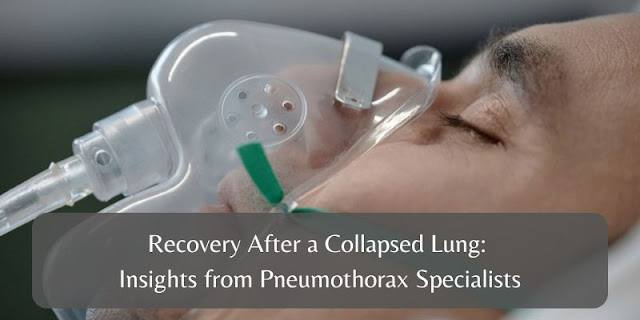Recovery After a Collapsed Lung: Insights from Pneumothorax Specialists
A collapsed lung can be a frightening experience, often bringing a sudden onset of chest pain and shortness of breath. This condition, medically referred to as a pneumothorax, occurs when air leaks into the space between the lung and chest wall, causing the lung to deflate partially or completely. While treatment typically stabilizes the patient quickly, the recovery process varies depending on the severity, cause, and overall health of the individual. Learning from pneumothorax specialists can provide clarity on how to navigate the path to full recovery.
Understanding the Condition
There are different types of this lung issue, each requiring a unique approach. A spontaneous form can occur without any injury or trauma, often seen in young, tall, thin individuals or people with underlying lung conditions. Meanwhile, traumatic types result from chest injuries, such as those from accidents or invasive procedures. Lastly, tension variants represent medical emergencies due to their rapid progression and effect on cardiovascular function.
What all these have in common is the need for accurate diagnosis and tailored treatment. Recovery does not end with the reinflation of the lung—it continues with rehabilitation, lifestyle changes, and follow-up evaluations.
Initial Treatment and Stabilization
The first step toward recovery is immediate medical care. In many cases, small cases may resolve on their own with oxygen therapy and monitoring. Larger or more severe cases often require chest tube insertion to remove trapped air and allow the lung to re-expand.
The timeline for stabilization can range from a few hours to several days, depending on the patient’s response. During this stage, it’s crucial to rest, avoid stress, and allow the body to heal. Frequent imaging may be required to assess lung expansion.
Even after initial improvement, medical teams will typically keep patients under observation to ensure there’s no recurrence before discharge.
Managing Physical Symptoms After Discharge
It’s important to focus on post-discharge care. Many individuals report lingering symptoms such as mild chest discomfort, fatigue, or breathlessness, especially during physical activity. These are common and usually temporary, but tracking them is important.
To aid recovery, doctors often recommend light physical activity like walking, which supports lung function without putting strain on the healing tissue. Deep breathing exercises are also encouraged to help the lung regain full capacity. Patients should avoid lifting heavy objects, intense workouts, or travel by air until cleared by their healthcare provider.
Smoking cessation is critical if applicable. Tobacco use not only increases the risk of recurrence but also slows down the healing process. Dietary choices and proper hydration also support overall wellness during this period.
Monitoring and Prevention Strategies
The emphasis shifts toward long-term care. One of the challenges with this condition is its tendency to recur. Some patients, particularly those with underlying pulmonary issues, may experience repeat episodes. In such cases, additional interventions like surgery or pleurodesis (a procedure to stick the lung to the chest wall) may be considered.
Regular follow-ups play a vital role in monitoring recovery. These appointments usually include physical exams, lung function tests, and imaging studies to confirm that the lung remains inflated and functioning well. If symptoms return, immediate consultation is necessary.
Patients are also educated about warning signs such as sudden chest pain, difficulty breathing, or a drop in oxygen levels. Prompt recognition and action are essential in preventing complications.
Some may consider seeing pneumothorax to gain insight into their condition and explore personalized treatment plans. These experts have advanced experience dealing with recurrent and complex cases, and their guidance can help in crafting a long-term health strategy.
Emotional and Psychological Impact
Recovery isn’t just physical. Many people experience anxiety after such a health scare, especially when symptoms mimic the original episode. It’s common to feel cautious about resuming normal activities or traveling again.
Support from mental health professionals or participation in patient support groups can help alleviate fears. Speaking openly about concerns with a trusted healthcare provider is a good first step in addressing emotional wellness.
Practicing mindfulness, engaging in relaxing activities, and setting recovery goals can also provide a sense of control during uncertain times.
Conclusion
Rebounding from a lung collapse involves more than just physical healing. It requires a commitment to ongoing care, awareness of symptoms, and lifestyle changes that support lung health. Consulting with pneumothorax specialists ensures patients receive informed, personalized treatment plans, reducing the likelihood of recurrence and promoting a smoother journey toward recovery. With proper support, both medical and emotional, individuals can regain full functionality and return to their daily lives with confidence.




Comments
Post a Comment